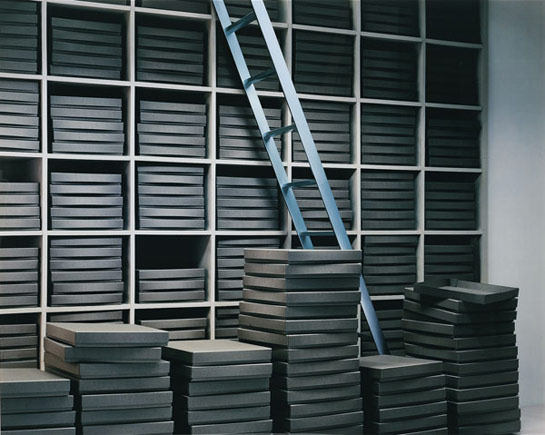But is it photography?

By now you might have heard of Sean O’Hagan raising a ruckus about the Deutsche Börse Prize and the Photographers’ Gallery. Apparently, there has been some debate about the gallery, which I haven’t followed. If what I see is correct, it’s about whether or not the gallery’s curators are doing a good enough job picking photography. O’Hagan uses this as a backdrop to complain about the Deutsche Börse Prize: “I have already written on this subject with regards to the Photographers’ Gallery, and stand by my conclusion that it should rebrand the Deutsche Börse as a conceptual photography prize.” (more)
First of all, I always finding arguing about prizes a bit silly, because, let’s face it, a prize is a prize. There might be a lot of money attached to it, but we’re not really talking about the Nobel Prize here. And even the Nobel prizes have these kinds of debates every year. Just look at how people complain about how the “wrong” person won the Peace or Literature Prize.
That aside, here’s the Deutsche Börse shortlist from 2010: Anna Fox, Zoe Leonard, Sophie Ristelhueber (winner), Donovan Wylie. Here’s 2009: Paul Graham (winner), Emily Jacir, Tod Papageorge, Taryn Simon. Here’s 2008: John Davies, Jacob Holdt, Esko Männikkö (winner), Fazal Sheikh. And let’s do one more, 2007: Philippe Chancel, Anders Petersen, Fiona Tan, The Atlas Group (winner). We can probably all agree that that’s a pretty diverse group of photographers, isn’t it? Would it make sense to rebrand the Deutsche Börse Prize as a conceptual photography prize given the variety of photographers shortlisted over the past years? You decide.
But there’s more. In his article, O’Hagan then singles out Thomas Demand and discusses his work, writing “Demand is essentially an installation artist, who builds three-dimensional, life-size replicas of places he has come across in found photographs.” (That’s a Thomas Demand photo at the top of this post) As you can imagine this set-up inevitably leads to the question: “The question is, though, is he the most intriguing photographer? Is he a photographer at all?”
The first question is either yes or no, depending on whether you think Demand is the most intriguing photographer. I don’t think so, but I’m perfectly happy with other people disagreeing with me. I’m not the biggest fan of conceptual photography, because for me, it’s usually too obvious. But should Thomas Demand win the Prize (I have no idea), I’m perfectly happy with that. You can say whatever you want but Demand’s approach to investigating what images say and mean is pretty unique.
The second question really gets me, though. Is Thomas Demand a photographer at all? Well, let’s see. When I go to an art gallery to look at a Thomas Demand exhibition, what do I see? Photographs on the wall. You can’t miss them. They’re huge. So why is Demand not a photographer?
OK, I was a bit facetious there. But still… Of course, Demand photographs installations that he creates based on older photographs. The end product - that is photography. Demand is not showing the sets he builds. In a sense, the sets are irrelevant for what he is after. To focus on the sets is like focusing on the fruits and vegetables in a still life and to then argue that the photographer is in fact in the fruits and vegetable business.
Photography has come a long(ish) way (let’s try to remember photography’s real age compared with other arts forms). It now contains a plethora of different types and ideas, ranging from street photography to photography done by machines, with a ton of stuff in between. Each of those different types offers different things. The real promise of contemporary photography lies not in what one type has to offer, but in the combination of what all of them combined have to offer. For any one type we should not be asking “Is it photography?” We should be asking “What is this type of photography doing? What is it telling us?”
And we might not like one type (or more than one). But I think we should be careful not to exclude some types of photography simply because we don’t like them, or because they’re not “photographic” (or orthodox) enough. Photography is what it is, and over the next decades it will probably include even more types. That’s what makes contemporary photography so exciting.